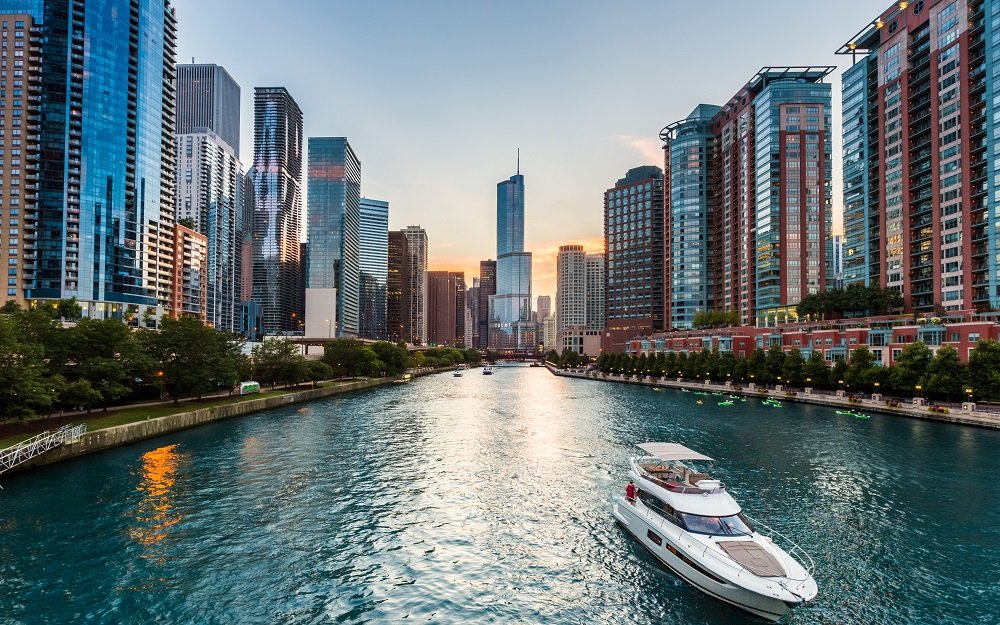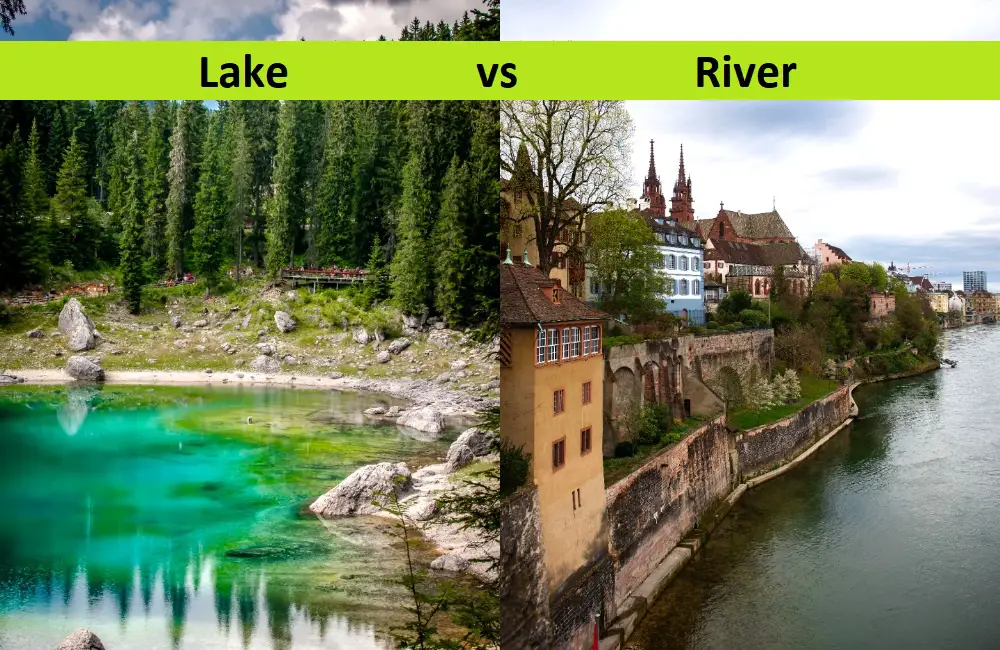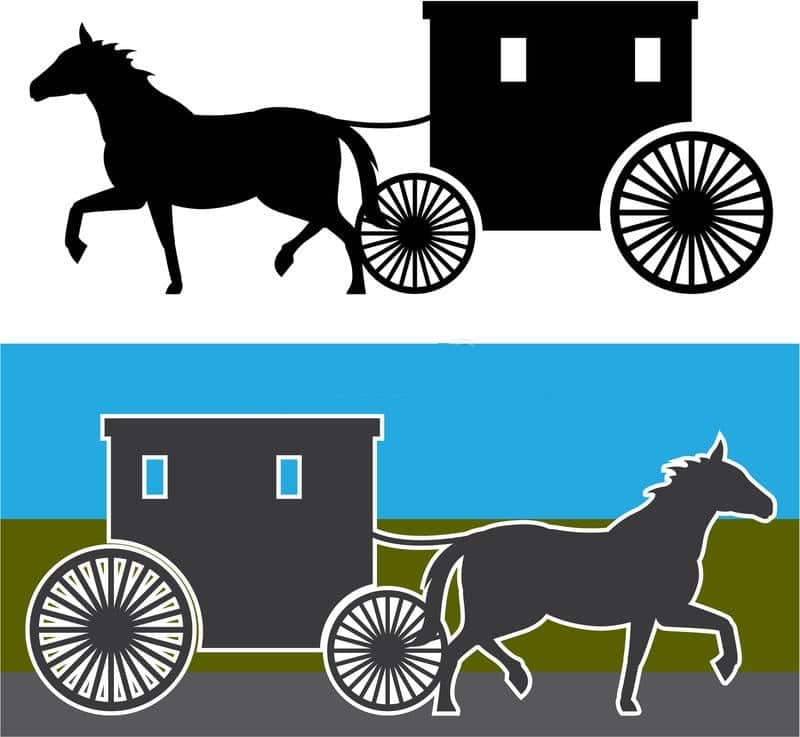River Vs. Lake: What’s The Difference?
Have you ever called a lake a river, or vice versa? The reason behind this is that you do not understand the difference between lake and river. Yes, it is true that both of these are bodies of water. However, it is like confusing the sea with the ocean, and there are times when it can get a little embarrassing.
So, what can you do to save yourself from such awkwardness? Give our article a try! It contains all the necessary information regarding the two terms, which will diminish any doubts you had before.
Also, we have made sure to compose the writing in a very easy-to-understand style so that you can enjoy everything we have provided.
What Is a River?

Since we are done with the first part, it is time that we start getting more into the details. Do not worry! We have made them in a very reader-friendly way, so you should have no problem understanding all the things that we have provided.
Definition
There are many natural water bodies on Earth. After all, 71% of the planet is covered with water. One of those water bodies (a small portion) is the rivers. These are huge water channels that carry stored water from an elevated place to the oceans or seas.
Now, a river can only be natural, and we shall cover that in the next paragraph.
Natural
Firstly, rivers have to be natural! Did you see the size of the river Nile?
Natural rivers like the Nile are gigantic waterways that carry water from one specific area to the ocean or sea. It carries approximately 300 million cubic meters of water.
Now, you might be wondering why we cannot create a river on our own. Well, the answer is pretty straightforward. We do not have the ability to provide such intense amount of water to create such a massive water entity. Only melting ice, extreme rainfall, and other natural causes can create rivers.
Also, these humongous channels are very beneficial to us. They provide nourishment to us via fish and supply water to grow crops. Also, they are the biggest water body where freshwater is found.
Movement
Since we have covered that water in the river comes from somewhere, it is wise to deduce that the water in them is constantly moving. Now, the direction of the moving water is usually along the banks.
Key Differences Between Rip Tide and Rip Current
What Is a Lake?

If you are done with the previous paragraph, you should have a clear view of what a river is. Now, it is time that we dig deeper into finding out what a lake is.
Definition
Unlike most of the types of water bodies present on our planet, lakes are probably some of the most versatile ones. These medium-sized water bodies come to existence when water is collected in a gap or indention.
Natural & Artificial
Lakes can be natural and man-made. In some cases, a dried-off river might give birth to a lake. You see, most of the water from the gigantic body dries off. However, in some parts, there might be an ample amount of surplus water, which might give birth to lakes.
In short, there are several natural causes that might give birth to a lake.
Now, you might have spotted a lake in someone’s backyard. Well, those are the artificial ones. They have to refill every now and then. Furthermore, an artificial lake can be created for agricultural purposes.
You see, lakes can act as the water system that will provide your crops the nourishment it needs to deliver excellent irrigation and other farming benefits.
Movement
They are still water. As there is no connection to any external bodies, lakes are very still.
Recommended for You:
- Stalactites and Stalagmites: What Are The Differences
- 7 Key Differences Between Minerals and Rocks
- Highway Vs. Freeway: What’s The Difference?
Lake Vs. River: A Table
Before we start getting into the details, it is a wise choice to have a clear understanding of what you are going to receive. And that is exactly what we are trying to do in this section!
Here, we are providing you with a table that contains all the relevant info in a summarized manner. Hence, we will be clearing out all the confusion right from the start!
Therefore, we suggest you to not skip the lake vs river table as it contains all the things you need. Let us get started, shall we?
|
Aspects to Compare |
Lake |
River |
|
Size |
A lake is similar to a pond but on a much larger scale. The average size of lakes varies from 5 acres (approximately 2 kilometers) to 20 acres (roughly 8 kilometers or more). | Rivers, on the other hand, are totally different. They do not have a circular shape; instead, they are like snakes. A river is conventionally like a zig-zag line, which stretches to thousands of kilometers. The length of the river Nile is estimated to be 6,650 km (6,650,000 m). |
|
Formation |
Lakes are created naturally and artificially. You see, lakes are formed when water is stored in a gap or indention in the ground called lake basins. These basins are made from the movement of tectonic plates, glaciers, abandoned parts of a river, etc. Or, one can dig up a big hole and fill it up. |
Rivers are crafted by mother nature. A river comes into existence when a large sum of water starts moving from a higher area to a lower one. Such a thing can occur due to rain, ice melting, or numerous other reasons.
|
|
Surrounding |
Generally, lakes are not covered by land all the time. Lakes are formed when water is stored in a gap or body; it can also happen in an urban area where asphalt is more seen or in grassy or marshy places. |
Rivers conventionally are found in nature. You cannot simply create a river in a city surrounding roads or asphalt. You will conventionally find rivers in forests, jungles, hilly areas, mountains, etc. |
|
Drainage |
Well, lakes may or may not be connected to a much larger water body like the ocean or sea. |
Rivers have to be connected to a more massive water body, or else it will not be able to flow (which is the only condition required to form a river). |
Key Differences Between Lake and River
We are done providing you with all the necessary info! Thus, it is time that we start comparing the two water entities.
- Rivers are extremely big water bodies stretching from hundreds of kilometers, while lakes are big, but they are not as big as rivers. Most of them range from 2 km to 10 km.
- In rivers, the water is constantly moving. On the flip side, in lakes, the water is still and calm.
- Rivers have a more zigzag shape and lakes contain a more circle-like shape.
- Lakes can be crafted naturally or artificially. Rivers have to be natural!
- Lakes are of different varieties and rivers are normally of one particular type.
Conclusion
We hope that you understand the difference between lake and river by now. As you can see, both of them have been a crucial part of our everyday life, and it is a wise thing to have a good idea of both of them.






